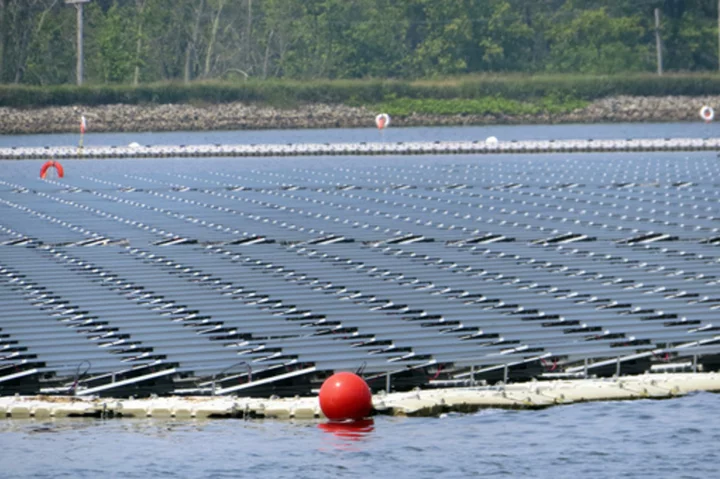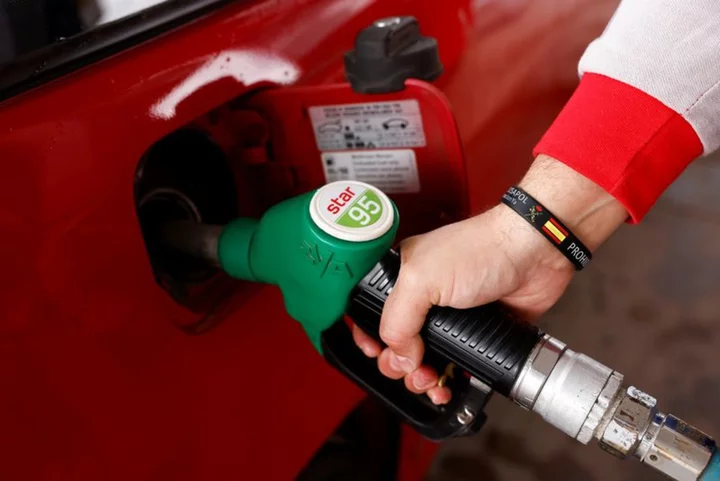MILLBURN, N.J. (AP) — New Jersey's Canoe Brook Water Treatment plant produces 14 millions gallons of drinking water a day.
Each one of those gallons weighs seven pounds, so it is quickly apparent that a large amount of energy is needed to move water from a reservoir to the treatment plant and into the 84,000 homes and businesses that the New Jersey American Water Company serves in the area.
So the water utility partnered with NJR Clean Energy Ventures, the renewable energy subsidiary of the natural gas firm New Jersey Resources, for a solution.
NJR Clean Energy Ventures built a vast array of solar panels, linked them together, and placed them on the surface of the water at Canoe Brook Reservoir.
The companies say the 17-acre solar array, consisting of 16,510 solar panels, is the largest floating solar array in North America — about twice the size of the next-largest facility, an array of floating panels on a body of water in Sayreville, New Jersey owned by that municipality.
The Millburn facility, which began operating in January, produces 8.9 megawatts of electricity, enough to power 1,400 homes.
But the power doesn't go to residential customers. Instead, it provides 95% of the water treatment plan's substantial energy requirements.
“It takes a lot of energy to pump that water,” said Mark McDonough, president of New Jersey American Water. “When we can use a cleaner, greener, more efficient energy source, we want to seize that opportunity.”
Long popular in Asia, floating solar arrays are starting to catch on in the U.S.
A study published in the journal Nature Sustainability in March found that thousands of cities -- more than 6,000 in 124 countries -- could generate an amount equal to all their electricity demand using floating solar, making it a climate solution to be taken seriously.
Neither company would say how much it cost to build the New Jersey solar facility, although Robert Pohlman, vice president of NJR Clean Energy Ventures, said, “It's a project that makes a lot of sense for both organizations.”
The Sayreville solar array, which is about half the size of the one in Millburn, cost $7.2 million to build, according to RETTEW, the Lancaster, Pennsylvania-based company that built it.
Shawn LaTourette, New Jersey's environmental protection commissioner, said the project enables the companies “to chip away at the rather considerable energy use of our water systems.”
Because salt water corrodes the equipment, floating solar arrays are generally placed on man-made bodies of fresh water such as reservoirs or holding basins for water treatment plants.
Putting solar panels atop plastic floats that are moored to the bottom of the reservoir helps reduce evaporation of water into the air, and the temperature of the water helps cool the solar panels, enabling them to work more efficiently, officials said.
___
Follow Wayne Parry on Twitter at www.twitter.com/WayneParryAC









